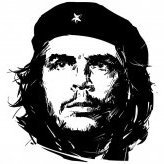
kingofkings
Nomads-
Content Count
2,894 -
Joined
-
Last visited
Content Type
Profiles
Forums
Calendar
Everything posted by kingofkings
-
Madaxweynaha Puntland Dr.Cabdiraxman Maxamed Farole oo booqasho oo gaarey 19, March 2012 degmada Rako ee gobolka Karkaar sidii uu qayb uga noqon lahaa furitaanka shir nabad lagu dhex dhigayo laba beelood ayaa booqdey xarumo muhiim ah oo ku yaal halkaasi. Madaxweynaha oo socdaalkan ku weheliyeen wasiiro iyo saraakiil ayaa 20, March 2012 waxa uu soo indha-indheeyey xarumo ku yaal Rako sida Xarunta caafimaadka Rako,iskuulka hoose ee degmada ,saldhiga ,ceelka biyaha ugu danbeyntiina xarunta degmada ayuu kula hadalay shacabka Rako oo isugu soo baxay fagaare aad u balaaran. Galabkii ayuu Dr.Cabdiraxman waxa uu booqdey sidoo kale xero ay sugan yihiin reer guuraa ay soo barakiciyeen dagaaladii dhexmarey labada beelood,waxana uu ka wareystey qaabka noloshooda isagoona kula balamay maamulka degmada iyo kan gobolkaba inay isku taagaan sidii loo wanaajin lahaa dadweynaha ku sugan halkaasi. Xaaladihii ugu danbeeyey ee dalka ,qorshaha nabada Somalia ,geedi socodka dimoqraadiyeynta Puntland,amaanka ,arrimaha bulshada iyo taabashada baahiyaha Rako ayay isugu jirtey khudbadii uu Dr,Cabdiraxman Farole u jeediyey dadweynaha Rako ka hor inta uusan ka qaybgalin shirkii nabadeynta furitaankiisa.
-
Sensei;807808 wrote: Beautiful place though, looks bit ancient. Waa xagee Dhuudo actually ? degmada Bander-Beyla ee gobolka Karkaar
-
Madaxweynaha Puntland Dr.Cabdiraxman Maxamed Maxamud Farole iyo wafdi uu horkacayey ayaa booqasho ku tagey 19, March 2012 tuulada Dhuudo oo hoostagta degmada Bander-Beyla ee gobolka Karkaar. Wafdiga madaxweynaha Puntland ayaa waxa ka mid ahaa wasiirka arrimaha guddaha Gen.Cabdulaahi Axmed Jaamac Ilkajir ,kuxigeenka Cali Yuusuf Cali Xoosh, taliyaha ciidamada daraawiishta Puntland Gen.Siciid Maxamed Xirsi iyo saraakiisha madaxtoyada Puntland. Soodhaweyn diiran ayay kala kulmeen Dhuudo oo ay ka qaybgaleen ardeyda iskuulada ,haweenka odayaasha dhaqanka iyo maamulka Degmada Bander-Beyla. Xarunta caafimaadka Dhuudo ayuu kormeer ku tagey Dr.Cabdiraxman Maxamed Farole oo xaalada caafimaad iyo adeegyada ay u baahanyihiin warbixino ku saabsan uu ka dhegeystey hawlwadeenada ku sugan xaruntasi. Sidoo kale kulan xog isku weydaarsanayeen dowaldda iyo dadka deegaanka ayaa ka dhacey hoolka shirarka ee Dhuudo oo ay ka qaybgalayn dhamaan inta kala duwan ee bulshada Dhuudo oo sheegey inay taageero la garab taagan yihiin maamulka,waxana ay soo gudbiyeen waxyaabaha ay ka tabanayaan in laga caawiyo. Iskuulka hoose/dhexe Dhuudoa ayuu Madaxweynaha Puntland Dr.Farole isku soo kala bixiyey isagoona lug ku dhexmarey dhamaan tuulada intii uu ku sugnaa,waxana uu kula dardaarmey horumarinta waxbarashada iyadoona wasaarada waxbarashada iyo caafimaadka Puntland u raaciyey in dhowaan ay ka helin doonaan jawaab ku saabsan da boolida baahiyaha adeegyada bulshada.
-
East Africa University Cultural Presentation (video)
kingofkings replied to kingofkings's topic in Politics
excellent work :cool: -
edited............
-
Al shabaab massacre in Mogadishu wipes out a whole family
kingofkings replied to Cambuulo iyo bun's topic in Politics
Cambuulo iyo bun;806800 wrote: AUN the family horrible massacre by the savages, AUN AMIN -
Carafaat;806623 wrote: This cartoon is rasict (spilled; racist) towards my clan. Where is JB and Alpha. We need to distentiate ourselves from Amiin Arts and call upon the SOL modeators to remove this thread. loooooooooooooooooooooooool. why is this racist toward your clan:confused: i thought this was a mockery of the current state of somalia.
-
1. Could you please briefly tell us about your areas of research interest and expertise? I am an expert in writing systems with a good deal of training in linguistics. I have for the past decade or so put nearly all of my energy into studying the writing systems of the world for the specific purpose of encoding them in Unicode. I'm also a font designer. 2. Could you please share with us what spurred your interest in the Osmania script? And when? I think it was in January 1998 that I first started looking into it. It was a year later that the first Unicode proposal document was written. What spurred my interest? Nothing in particular. It was one of several simple alphabetic scripts that I looked into at the time. It wasn't until a member of the Somali community made contact with me that I became more interested and involved. To put it another way, I love writing systems of all kinds, and was doing preliminary work on a number of them, Osmanya included. 3. Are there groups or individuals who assisted you in your research in the Osmania script, such as locating material, getting access to public and private collections, and making contacts with people who are authority on the Osmania script? I am very grateful to Osman Abdihalim Osman Yusuf Keenadiid and to his family for the support they gave this project. It is, as it turns out, difficult to find accurate information on Osmanya. Many books about writing systems repeat the same alphabet, showing the same untransliterated and untranslated sample! Osman Abdihalim Osman sent me a photocopy of a book which made the encoding of the script possible. 4. Are there any tangible results from your considerable research in the Osmania script? If so, how did you disseminate that information? The first proposal to encode Osmanya can be found at http://www.dkuug.dk/JTC1/SC2/WG2/docs/n1948.pdf. It was written in January 1999. Osman Abdihalim Osman found the paper on the web and contacted me about it. Working together with him, I published the final proposal, written in July 2001, which can be found at http://www.dkuug.dk/JTC1/SC2/WG2/docs/n2361r.pdf. Both of these papers were submitted to ISO/IEC JTC1/SC2/WG2 and to the Unicode Technical Committee, the groups responsible for the Universal Character Set. 5. How far along are you into your efforts to digitize the Osmania script and when can we expect to have Osmania script fonts for computers? Osmanya has been accepted for encoding in Plane 1 of the Unicode Standard, and is out for ballot in JTC1/SC2. That ballot will close in November 2002, and the amendment will be published some time the following year. I designed an Osmanya font very quickly to prepare the script proposal. That's why the fonts in the proposal documents are -- in my own opinion -- very rough and crude. Recently I began to "clean up" my fonts, to give to them sharp and typographically professional shapes. I expect that some time next year I will release them to the general public. I can say one thing -- if I were able to get hold of an original printed source it would be easier to improve the font, because an original document would be superior to the photocopy which I have at present. I am also interested in providing a method for keyboard input. I believe that a QWERTY-based keylayout would be the most convenient input method, especially as it would be easiest for Somalis to use since they are already used to the Latin orthography. 6. What are the barriers or problem you have encountered in conducting and, perhaps, expanding your research on the Osmania script? As I said, it was difficult to find information about it. There is surprisingly little on the internet about the script, considering that Osmanya was in active use until at least 1972. I am surprised not to find it used in more Somali websites, even just as decorative graphics, given its cultural and historical importance. Perhaps there are political issues of which I am unaware? I don't know how many books were printed with the script, or if newspapers were. I have not seen them, in any case. I have put a PDF file of the entire book http://www.evertype.com/standards/iso10646/pdf/afkeenna-iyo-fartiisa.pdf Afkeenna iyo fartiisa on my website. This is a large file, about 7 MB. It is the source book which we used to prepare the proposal. 7. Somali, as you are aware of, is currently written in the Latin alphabet. In your opinion, how difficult would it be to reintroduce the Osmania script to the Somalis or in Somalia? Certainly in this day and age, with the Latin orthography in use for thirty years, it might be difficult to replace Latin with Osmanya. But it is an important part of Somali culture, and I would hope that the script would form a part of the school curriculum in Somalia. In Sweden and Norway, for instance, children learn about the ancient Runic alphabet in school, and certainly some of them learn it and write notes to one another in Runes for the fun of it. Calendars, restaurant menus, T-shirts, and other kinds of "public text" could make use of it in conjunction with the Latin script. Other countries do similarly with their scripts. Why not Somalia? 8. Given your considerable expertise in extinct scripts, how would you characterize the foundations and the structure of the Osmania script? Structurally, Osmanya is a simple left-to-right alphabet with 22 consonants and 8 vowels. Three of those vowels are long vowels; the consonants WAW and YA are used to represent the other two long vowels UU and II. The Osmanya alphabet is very well suited to represent the sounds of the Somali language, in just the same way as the new Latin orthography does. The alphabetical order of Osmanya shows the influence of the Arabic script. The shapes of its letters are simple, to recognize and easy to write. It is a marvellous invention. 9. What do you know about the creator of the Osmania script, Mr. Osman Yusuf Kaynadid? Not as much as I would like. In searches on the web, I have found out that he was a very religious man. I was interested to learn that the reason he kept his mouth covered was "to avoid sin". I think that it would be a great thing if someone would write a biography of this important man. Thank you for taking time out of your busy schedule to answer our questions. It has been an honour for me to work on the encoding of the Osmanya script.
-
smh:rolleyes:
-
http://www.youtube.com/watch?feature=player_embedded&v=ryzdbf0pK5Q#!" frameborder="0" allowfullscreen>


